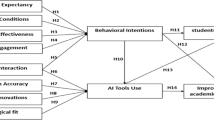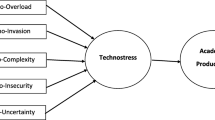Abstract
Recently, the building industry has shown great interest in building information modeling (BIM) due to the many benefits BIM provides. During the last decade, the government of Dubai has been working toward a BIM environment, where any new building project that is ten floors or higher shall be submitted in BIM format. The need for BIM creates more job opportunities for technicians with BIM skills. This inflates the need to prepare related field engineers with BIM background before graduation. This report analyzes the implementation of BIM in a construction course, which is currently using AutoCAD, by splitting the laboratory skills. Through this implementation, we will test whether adding BIM based on Revit to a currently existent course will improve the students’ motivation, performance and satisfaction. The authors use the results of the Architectural Engineering (AE) students at the United Arab Emirates University (UAEU) in construction courses to study the performance before and after implementing BIM. The authors found some issues, which can decrease the students’ performance with a 97% certainty. The students’ motivation and satisfaction was tested using a pre-test/post-test quasi-experiment design. The tests showed that BIM based on Revit reduces student performance time while increasing student motivation and satisfaction. The causes behind the last statement were analyzed with the use of interviews with related students.
Similar content being viewed by others
References
National Institute of Building Sciences, building SMART alliance. National BIM Standard-United States® Version 3, 2015
Banawi, A.: identifying benefits and challenges of implementing building information modeling in building industry—case study approach. Autom. Constr. J. (under review)
Milliken, J., Barnes, L.P.: Teaching and technology in higher education: student perceptions and personal reflections. Comput. Educ. 39(03), 223–235 (2002)
Educaweb: http://www.educaweb.com/noticia/2013/01/18/52-docentes-ha-tenido-problemas-utilizar-tic-aula-debido-fallos-tecnicos-5940/. Retrieved 18 Mar 2013 (2013)
Salleh, H., Phui, Fung W.: Building information modelling application: focus-group discussion. Građevinar 66(08), 705–714 (2014)
Rogers, D.L.: A paradigm shift: technology integration for higher education in the new millennium. Educ. Technol. Rev. 2000, 19–27 (2000)
Bates, T., Poole, G., Davis, C.H., Shaw, D., Esqueda Oliva H, et al.: Effective teaching with technology in higher education: foundations for success. e-libro, Corp, 2003
Kymmell, W.: Building Information Modeling: Planning and Managing Construction Projects with 4D CAD and Simulations. McGraw Hill Professional, New York (2007)
Chang, Y., Shih, S.: BIM-based computer-aided architectural design. Comput. Aided Des. Appl. 10(1), 97–109 (2013)
State Education Resource Center (SERC): Best practices from the state education resource center. Retrieved 4 Apr 2013. Available at: http://ctserc.org/docs/SERCWorks-spring2011.pdfretain (2011)
Riera, A.S., Redondo, E., Fonseca, D.: Geo-located teaching using handheld augmented reality: good practices to improve the motivation and qualifications of architecture students. Univers. Access Inf. Soc. 14(3), 363–374 (2015)
Valverde Berrocoso, J., Arroyo, Garrido, del Carmen, María, Fernández Sánchez, R.: Enseñar y aprender con tecnologías: un modelo teórico para las buenas prácticas educativas con TIC. Teoría Educ. 11(1), 26 (2010)
Fonseca, D., Redondo, E., Villagrasa, S.: Mixed-methods research: a new approach to evaluating the motivation and satisfaction of university students using advanced visual technologies. Univers. Access Inf. Soc. 14(3), 311–332 (2015)
Guney, D.: The importance of computer-aided courses in architectural education. Proc. Soc. Behav. Sci. 176, 757–765 (2015)
Gorghiu, L.M., Gorghiu, G., Dumitrescu, C., Olteanu, R.L., Glava, A.E.: Integrating ICT in traditional training-reactions of teachers and pupils’ involved in FISTE project activities. Proc. Soc. Behav. Sci. 30, 1142–1146 (2011)
Wang, T.: Rethinking teaching with information and communication technologies (ICTs) in architectural education. Teach. Teach. Educ. 25(8), 1132–1140 (2009)
Rabee Reffat, K.: Revitalizing architectural design studio teaching using ICT: reflections on practical implementations. Int. J. Educ. Dev. ICT 3(1), 39 (2007)
Oxman, R.: Theory and design in the first digital age. Des. Stud. 27(3), 229–265 (2006)
Magdy, I., Krawczyk, R.: The level of knowledge of CAD objects within the building information model. In: Association for Computer-Aided Design in Architecture 2003 Conference, 2003
Kocaturk, T.: An investigation of the emerging knowledge in digital design from a multidisciplinary perspective. Arch. Eng. Des. Manag. 3(2), 93–105 (2007)
Taylor, M., Junshan, L., Michael, F.: Integration of building information modeling (BIM) into an ACCE accredited construction management curriculum. In: Proceedings of the 44th Annual Conference by Associated Schools of Construction. Auburn University, 2008
Barison, M.B., Santos, E.T.: Review and analysis of current strategies for planning a BIM curriculum. In: Proceedings of the CIB W78 2010 27th International Conference, 2010
Barison, M.B., Santos, E.T.: BIM teaching strategies: an overview of the current approaches. In: Proceedings of the ICCCBE 2010 International Conference on Computing in Civil and Building Engineering, 2010
Hietanen, J., Drogemuller, R.: Approaches to university level BIM education. IABSE Conference, 2008
Ferrandiz, J., Fonseca, D., Banawi, A.: Mixed method assessment for BIM implementation in the AEC curriculum. In: International Conference on Learning and Collaboration Technologies. Springer, 2016
Fonseca, D., Villagrasa, S., Valls, F., Redondo, E., Climent, A., Vicent, L.: Engineering teaching methods using hybrid technologies based on the motivation and assessment of student’s profiles. In: Frontiers in Education Conference (FIE). IEEE, 2014
Fonseca, D., Villagrasa, S., Valls, F., Redondo, E., Climent, A., Vicent, L.: Motivation assessment in engineering students using hybrid technologies for 3D visualization. In: 2014 International Symposium on Computers in Education (SIIE). IEEE, 2014
Neuhäuser, M., Wilcoxon, F.: Individual comparisons by ranking methods. Biom. Bull. 1(6), 80–83 (2011)
Fay, M.P., Proschan, M.A.: Wilcoxon–Mann–Whitney or t-test? On assumptions for hypothesis tests and multiple interpretations of decision rules. Stat Surv 4, 1–39 (2010)
DePuy, V., Berger, V.W., Zhou, Y.Y.: Wilcoxon–Mann–Whitney test. In: Everitt, B.S., Howell, D.C. (eds.) Encyclopedia of statistics in behavioral science, Wiley (2005)
Neuhäuser, M.: Wilcoxon–Mann–Whitney test. In: International encyclopedia of statistical science, pp. 1656–1658. Springer, Berlin (2011)
Author information
Authors and Affiliations
Corresponding author
Rights and permissions
About this article
Cite this article
Ferrandiz, J., Banawi, A. & Peña, E. Evaluating the benefits of introducing “BIM” based on Revit in construction courses, without changing the course schedule. Univ Access Inf Soc 17, 491–501 (2018). https://doi.org/10.1007/s10209-017-0558-4
Published:
Issue Date:
DOI: https://doi.org/10.1007/s10209-017-0558-4




